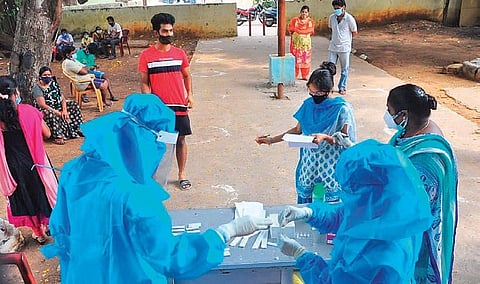

BENGALURU: Going by the COVID-19 War Room data on day-wise positivity rate, the third wave peaked in Karnataka on January 23, 2022. This was when the highest rate was observed, at 32.95 per cent, after which the figures began declining consistently.
Agreeing that this was the peak, following which there was a plateauing of COVID-19 cases, Dr CN Manjunath, member of the COVID-19 Technical Advisory Committee, said that Karnataka is following the same trend as Delhi and Maharashtra, albeit with a gap of two to three weeks.
"If we observe the trend in Europe and US, we can see a fourth and even fifth wave because the virus is known for mutations. The Omicron variant was less virulent than Delta, but we can't say this will be the last variant. The entire world has to be vaccinated and only then the mutations might end," said Dr Manjunath, who is also director of Jayadeva Institute of Cardiovascular Sciences and Research.
He cited the example of only 15 per cent of African nations being vaccinated against COVID-19, and how this could provide scope for virus mutations to find hosts. It is, therefore, the responsibility of all countries to support vaccination in Africa, he said.
There were two models that had projected the wave in Karnataka will peak either around January 24 or January 29, and the former has come true, especially in Bengaluru, said Dr Nagaraj.
"After the peak, cases have gradually decreased though testing rate remains the same. However, people still need to be careful and follow COVID appropriate behaviour. COVID-19 will not end but severity will be less, even if new variants show up. It will be similar to H1N1 which also saw variants but gradually declined," he said.
Tracing the day-wise positivity rate as per War Room data, there is a consistent increase from December 23, when the third wave began and figures increased from 0.28 per cent to 0.30 per cent. From January 16, dips and increases were reported, but from January 23 onwards, the positivity rate began reducing and touched single digits on February 4, at 9.04 per cent.
"On the clinical front, we have been lucky with Omicron not penetrating the lungs. The order of the day is home isolation but those with comorbidities must have risk assessments," pointed out Dr Manjunath, adding that people with comorbidities should, however, not ignore symptoms.